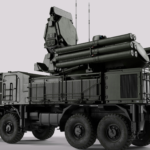In a dramatic escalation of tensions between nuclear-armed neighbors India and Pakistan, the Indian Armed Forces unleashed a futuristic arsenal of loitering munitions—Israel-made HAROP drones and Indo-Israeli SkyStriker drones—in a series of precision strikes dubbed “Operation Sindoor.” These strikes, launched in retaliation for a deadly terrorist attack in Pahalgam, Kashmir, that claimed 26 civilian lives, have thrust these cutting-edge drones into the global spotlight, showcasing their lethal prowess and redefining modern warfare. But what makes these drones so formidable, and how did they shape the battlefield in this high-stakes conflict?
A New Era of Warfare: The Rise of Loitering Munitions
Loitering munitions, often called “kamikaze” or “suicide drones,” are a hybrid of drones and missiles, designed to hover over a battlefield, scout for targets, and strike with pinpoint accuracy by crashing into their targets with explosive payloads. Unlike traditional drones, which may return to base, these munitions sacrifice themselves to deliver devastating blows, offering unparalleled flexibility and precision. The HAROP and SkyStriker drones, deployed by India in strikes across nine terrorist camps in Pakistan and Pakistan-occupied Kashmir (PoK), exemplify this game-changing technology.
The IAI HAROP: The Silent Predator
Developed by Israel Aerospace Industries (IAI), the HAROP drone is a loitering munition that blends the surveillance capabilities of a UAV with the destructive power of a guided missile. With an endurance of up to 9 hours and an operational range of 1,000 kilometers, the HAROP is a long-distance hunter, capable of autonomously tracking and engaging targets or operating under human-in-the-loop control for real-time decision-making. Its stealthy airframe and anti-radiation capabilities make it particularly effective against enemy air defense systems, allowing it to home in on radio emissions with deadly precision.
Equipped with a 23-kilogram warhead, the HAROP can obliterate high-value targets like command centers, radar installations, and air defense batteries. Its electro-optical sensor provides 360-degree coverage, relaying video imagery via satellite to operators, who can abort strikes up to seconds before impact or redirect the drone to a new target. In Operation Sindoor, India reportedly used HAROP drones to neutralize air defense radars and systems in locations like Lahore, showcasing their ability to disrupt Pakistan’s military infrastructure with surgical accuracy.
The SkyStriker: Bengaluru’s Silent Assassin
The SkyStriker, a smaller but equally lethal loitering munition, is a product of collaboration between Israel’s Elbit Systems and India’s Alpha Design, manufactured in Bengaluru. Designed for tactical operations, the SkyStriker carries a warhead of 5 to 10 kilograms and boasts a range of approximately 100 kilometers. Its electric propulsion system renders it nearly silent, making it ideal for covert missions where stealth is paramount. With a loitering time of up to 2 hours with a 5-kilogram payload, the SkyStriker can hover over a target area, lock onto moving or static targets using its electro-optical sensor, and dive at speeds of up to 300 knots to deliver a devastating strike.
What sets the SkyStriker apart is its operational flexibility. Operators can choose the angle and direction of attack, from shallow to steep dives, and even abort a strike just two seconds before impact, allowing for last-second adjustments or safe return if no targets are found. In Operation Sindoor, SkyStriker drones were instrumental in targeting terrorist infrastructure in Bahawalpur and Muridke, home to bases of Jaish-e-Mohammed and Lashkar-e-Taiba, respectively. Their precision ensured minimal collateral damage, aligning with India’s claim of “measured, proportionate, and responsible” strikes.
Operation Sindoor: A High-Tech Vengeance
The catalyst for India’s drone strikes was a brutal terrorist attack on April 22, 2025, in Pahalgam’s Baisaran Valley, where 26 civilians, mostly Hindu tourists, were gunned down. India accused Pakistan of backing the attackers, a claim Islamabad denied. In response, on the night of May 6-7, 2025, India launched Operation Sindoor, targeting nine terrorist camps—four in Pakistan and five in PoK. The operation, executed entirely from Indian territory using Rafale jets, SCALP missiles, HAMMER bombs, and loitering munitions, killed over 80 terrorists linked to banned outfits like Jaish-e-Mohammed, Lashkar-e-Taiba, and Hizbul Mujahideen, according to Indian sources.
HAROP drones played a pivotal role in neutralizing Pakistan’s air defense systems, paving the way for other strikes. Meanwhile, SkyStriker drones, with their cost-effective precision, targeted terrorist training camps and infrastructure, ensuring maximum impact with minimal risk to Indian forces. A local in Muridke, Pakistan, recounted the terror: “One drone came first, followed by three others, and they attacked… everything is destroyed.” The strikes, carried out at 1:44 AM, shattered the night, leaving Pakistan scrambling to respond.
Pakistan’s Counter: A Battle in the Skies
Pakistan’s military claimed to have shot down 25 Indian drones, primarily HAROPs, using a combination of “soft kill” (electronic countermeasures) and “hard kill” (weapons-based) tactics. Debris from downed drones was reported across cities like Lahore, Karachi, and Rawalpindi, with one drone striking a military target near Lahore, wounding four soldiers. Pakistan’s Information Minister, Attaullah Tarar, vowed a “befitting reply,” while Prime Minister Shehbaz Sharif called the strikes a “blatant act of war.” However, India’s Defense Ministry countered that Pakistan attempted to escalate tensions by targeting Indian military installations with drones and missiles, which were neutralized.
The interception of HAROP drones has sparked debate about the vulnerabilities of loitering munitions, with some questioning India’s $2.9 billion investment in Israeli drone technology. Yet, experts argue that the HAROP’s stealth and satellite-based communication make it difficult to jam, and Pakistan’s claims of downing 25 drones remain unverified. The SkyStriker, with its smaller profile and silent operation, likely evaded detection in many instances, underscoring its tactical advantage.
Why These Drones Matter: A Global Perspective
The use of HAROP and SkyStriker drones in Operation Sindoor marks a watershed moment in South Asian warfare, highlighting the growing role of loitering munitions in modern conflicts. These drones, previously battle-tested in Azerbaijan’s 2020 victory over Armenia, have proven their worth against armored vehicles, air defenses, and terrorist infrastructure. In Nagorno-Karabakh, HAROP drones destroyed Armenian S-300 air defense batteries, while SkyStrikers targeted moving tanks with surgical precision, cementing their reputation as force multipliers.
For India, these drones address a critical need in a region fraught with border tensions with Pakistan and China. The Indian Army, which inducted over 100 SkyStrikers in 2021 under emergency procurement, views them as cost-effective tools for precision strikes, especially in counterterrorism operations. The HAROP, operated by the Indian Air Force since 2009, complements this arsenal with its long-range capabilities, enabling India to project power deep into enemy territory without risking human lives.
Globally, the India-Pakistan drone clash has raised alarms about the proliferation of loitering munitions in a nuclearized region. Experts warn that drones capable of targeting high-value assets, including nuclear delivery systems, could destabilize strategic deterrence. Pakistan’s own drone fleet, including Turkish Bayraktar TB2s and Chinese Wing Loong IIs, adds to this arms race, with both nations integrating drones with precision missiles to overwhelm defenses.
The Future of Warfare: Drones as Game-Changers
As the dust settles on Operation Sindoor, the HAROP and SkyStriker drones have emerged as symbols of India’s technological leap in warfare. Their ability to loiter, scout, and strike with unmatched precision has given India a decisive edge in counterterrorism and border conflicts. Yet, the escalation with Pakistan, marked by cross-border shelling and competing drone attacks, underscores the volatile nature of drone warfare in South Asia.
For the Indian Armed Forces, these drones are more than weapons—they are force multipliers that enhance situational awareness, reduce risk to troops, and deliver devastating blows to adversaries. For the world, Operation Sindoor is a stark reminder that the battlefield of the 21st century is increasingly dominated by silent, invisible attackers that strike without warning. As India and Pakistan navigate this tense standoff, the HAROP and SkyStriker drones have cemented their place as the vanguards of a new, high-tech era of warfare.



